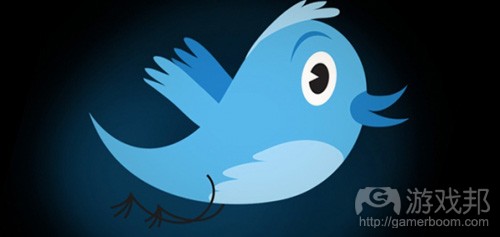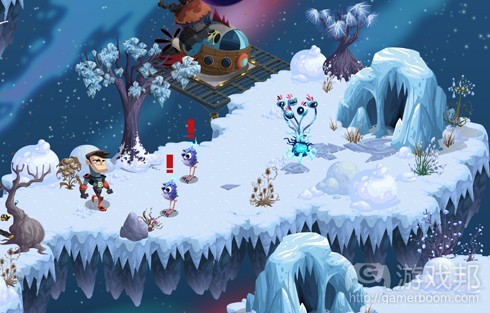每日观察:关注电子游戏《Curiosity》社交元素及IAP设置(6.8)
1)据serkantoto报道,继收购美国开发商Funzio之后,日本社交游戏公司GREE日前收购另一家海外社交游戏开发商PaprikaLab,后者是一家韩国初创企业,已向Facebook和手机平台发布一系列游戏。
GREE于去年夏天与韩国开发商Com2us合作推出一款社交棒球游戏,并于去年秋季在首尔成立新工作室,在今年1月份又向韩国智能手机游戏公司Mobicle投资,并与当地的Company 100和Pictosoft这两家公司针对GREE全球平台展开合作。
PaprikaLab成立于2007年,GREE尚未透露具体成交数额,仅表示将于6月22日敲定这项交易。
2)据路透社报道,Twitter在移动平台的盈利性超过桌面电脑平台,这一点与Facebook形成鲜明对比,众所周知Facebook在移动领域的盈利性并不乐观。
曾有观察者指出,美国用户3月份在Facebook移动平台的投入时间约441分钟(超过7小时),而在桌面电脑上访问Facebook的平均时间则是391分钟,但据Facebook所称,公司仅有一小部分收益来自移动用户(游戏邦注:Facebook在2011年总收益为37亿美元)。
尽管Twitter目前收益仅为Facebook的四分之一左右,但它在移动领域的盈利能力将有助于Twitter在未来发挥更大影响力。
3)游戏行业元老Peter Molyneux日前宣布将通过自己的新公司22 Cans在未来数周推出新游戏《Curiosity》。(游戏邦注:Molyneux曾在微软和Lionhead任职,在今年初离职并与前Lionhead首席技术官Tim Rance一起创办自己的独立工作室)。
玩家在游戏中会看到包含一个黑色立方体的小房间,每个在线玩家都会看到同个立方体,当玩家破坏这个立方体时,后者就会变得越来越小并最终破裂,但只有完成最后一击的玩家才能看到立方体里面有何物品。这个最终玩家就可以通过社交网站发布消息,告诉其他玩家立方体中是什么东西。
该游戏还植入了IAP内容,允许玩家花钱购买更强大的凿子等武器,其中有一把钻凿的售价高达5万英磅(约7万7400美元),但买到这项道具的玩家必能剖开立方体。
据Molyneux所称,这并非一种纯盈利性的设计,其主要用意是测试玩家的消费心理。
4)据games.com报道,在今年E3展会上亮相的Insomniac Games首款Facebook游戏《Outernauts》拥有出色的故事、场景和战斗元素,玩家在游戏中要扮演一个Outernaut,捕获多种外星怪兽进行研究,同时还要打败邪恶的敌人Sludge Co.。
与《口袋妖怪》一样,玩家可以使用自己捉获的外星怪兽攻击敌人,并以自己研究出的技能增加怪兽的攻击力。(本文为游戏邦/gamerboom.com编译,拒绝任何不保留版权的转载,如需转载请联系:游戏邦)
1)GREE Buys Korea-Based Social Game Maker PaprikaLab [Social Games]
by Dr. Serkan Toto
Five weeks after the Funzio deal in the US, GREE acquired another foreign social game maker. This time, the company went for Korean startup PaprikaLab, which has released a number of titles on Facebook and mobile devices so far.
GREE teamed up with Seoul-based COM2US for a social baseball game last summer, opened an office in Seoul last fall, invested in Korean smartphone game company Mobicle in January, and partners with two other local startups (Company 100 and Pictosoft) for the global GREE platform.
Terms of the PaprikaLab weren’t disclosed, but GREE does say the deal will be finalized on June 22. PaprikaLab was founded in 2007.(source:serkantoto)
2)Unlike Facebook, Twitter’s mobile revenue rivals the desktop
Tom Cheredar
It seems that Twitter has done an exceptional job when it comes to monetizing its mobile audience.
Not only that, but Twitter CEO Dick Costolo said the startup often generates more revenue from mobile usage than desktop, according Reuters.
“We’re borne of mobile,” Costolo said at an industry event hosted by The Economist Wednesday. “We have an ad platform that already is inherently suited to mobile, even though we launched our platform on the Web and only started running ads on mobile recently.”
The revelation is good news for investors, especially in light of Mary Meeker’s recent report indicating that mobile monetization is poor among web properties. It’s also good news for people who want to distinguish Twitter from newly public Facebook.
Facebook has had its fair share of criticism lately when it comes to monetizing its mobile audience. As VentureBeat’s Jennifer Van Grove previously pointed out, the average U.S. Facebook user spent 441 minutes (or just over 7 hours) accessing the social network’s mobile properties in March compared to 391 minutes on the desktop. Despite these numbers, Facebook admits its only generating a fraction of its total revenue from mobile users. (To give you some perspective, Facebook generated a total of $3.7 billion in revenue in 2011.)
While Twitter’s revenue is currently estimated to be about a fourth of Facebook’s, this distinction of properly monetizing its audience will become more important as the company inches its way toward going public.(source:venturebeat)
3)Molyneux unveils Curiosity, a social experiment with $77K in-app purchase
by Mike Rose
Industry veteran Peter Molyneux is set to release the first experimental title from his new start-up 22 Cans in the next few weeks, as part of his look into how social media can be used within games.
Curiosity will present players with a small room that contains a black cube, Molyneux told New Scientist. Every player online is looking at the same cube, and as players chip away at the cube, it will become smaller and smaller until it breaks apart.
However, only the player who dealt the final blow will be able to see inside the cube. The idea is that this player will then spread the news of what was inside the cube to other players via social networking.
There is a twist. When the cube has been chipped away a fair amount, a number of special in-app purchases will be made available, allowing users to purchase special stronger chisels for money.
One diamond chisel will be made available for £50,000 ($77,400), and will essentially ensure that the purchaser is the person who breaks open the cube, says Molyneux.
“It’s an insane amount of money,” Molyneux said. “This is not a money-making exercise; it is a test about the psychology of monetization.”
This is the first of 22 experimental games, Molyneux revealed, and each will attempt to explore the psychology of social media in video games.
Molyneux left Microsoft and Lionhead earlier this year to start his own independent outfit alongside former Lionhead chief technical officer Tim Rance.(source:gamasutra)
4)E3 2012: Outernauts is the true Pokemon experience on Facebook
by Joe Osborne
When we first heard word of Insomniac Games’ first Facebook game, Outernauts, we jokingly dubbed it “Pokemon in space.” After some time with the game during E3 2012 in Los Angeles, we can safely say that our description was no joke. However, Outernauts seems to have a leg up on the competition where other similar games fall flat: story, environment and combat.
Outernauts sets players in the shoes of an Outernaut, which is kind of like an astronaut, but one out to do more than just explore the galaxy. It’s the Outernauts’ job to capture various alien beasts and study them in hopes of bringing them closer to an ancient alien artifact. Of course, another organization known as Sludge Co. is after the very same relic, but for nefarious reasons, no doubt.
Gallery: Outernauts on Facebook
This mission to beat Sludge Co. to the artifact spans numerous planets, all presented in a charming ’50s art style not found in too many Facebook games much less games at all. Just like in Pokemon, people settle their disputes using the alien beasts they’ve captured for study, which come with a number of interesting abilities to use in battle. While the game’s many environments employ light puzzles to make navigating the world a bit more interesting, the battles are where its at.
When players encounter Sludge Co. goons, they’ll get to do battle in up to three versus three bouts. Since each alien beast has four attacks to choose from, many of which pack extra status effects, its pays to learn what each attack does. Players can set up an enemy monster for destruction using their various alien beasts’ abilities in conjunction. It’s this type of strategy that games like Pokemon do so well, and other Facebook games in the monster-catching sub genre have failed to.
It certainly helps that Outernauts has character in spades. Everything from the various monsters (and their evolutions) to the cast of characters, Outernauts is all about making its world and characters memorable. This is designed to be Insomniac’s next big franchise, after all. Whether that will be the case on Facebook, a platform generally intended for adults, will be interesting to see pan out.
Based on our first impressions, Outernauts deserves such a following at the very least. We’ve been holding out for a full-featured Pokemon-like game on Facebook for some time, and with a lengthy story campaign as well as player versus player features , Outernauts could very well be just that. Plus, it helps to be absolutely adorable.(source:games)










































 闽公网安备35020302001549号
闽公网安备35020302001549号